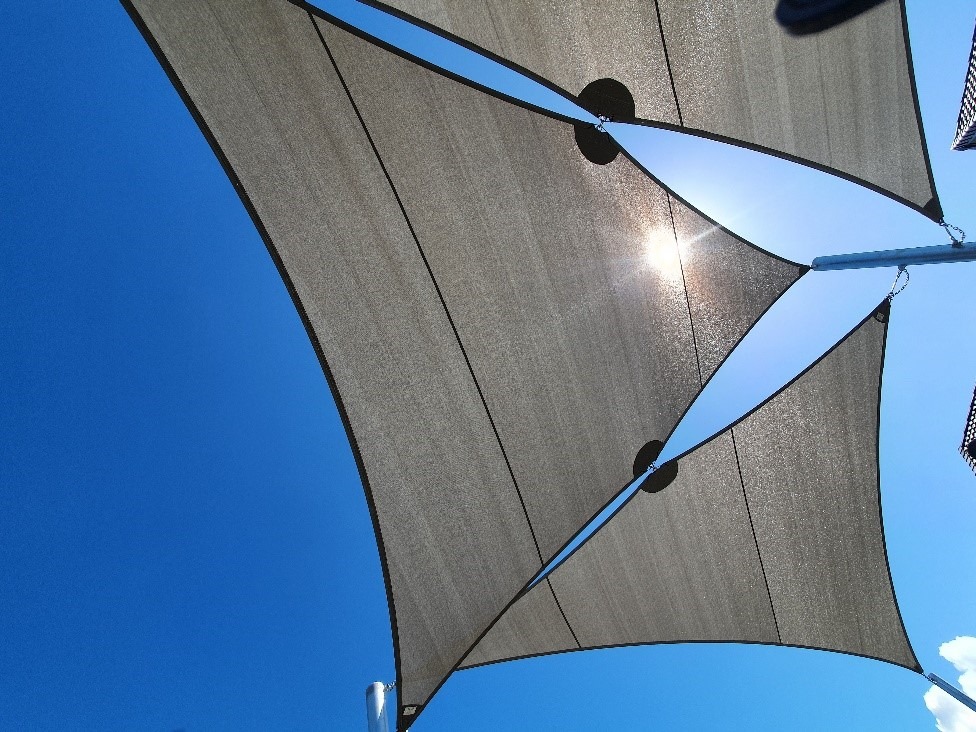South East Queensland (SEQ) is renowned for its subtropical climate, characterized by hot, humid summers and mild winters. With the region’s high levels of sunshine and occasional severe weather events like thunderstorms and cyclones, choosing the right material for your shade structure is critical. A well-chosen shade structure not only provides comfort and protection but also enhances the durability and longevity of your investment. This article delves into the factors you should consider when selecting the best material for your shade structure in SEQ.
Understanding the SEQ Climate
Before diving into material options, it’s important to understand the specific climatic conditions of South East Queensland:
- Sun Intensity: SEQ experiences some of the highest levels of solar radiation in Australia, making UV protection a key consideration for shade structures.
- Humidity and Rainfall: The region has high humidity levels, especially in summer, and experiences significant rainfall, often in the form of intense storms.
- Wind Speeds: Strong winds, sometimes reaching cyclone levels, are not uncommon, particularly in coastal areas.
- Temperature Variations: Summers are hot and humid, with temperatures often exceeding 30°C, while winters are mild with temperatures ranging from 10°C to 21°C.
Given these conditions, the material you choose must be resilient to intense sunlight, humidity, and wind, while also providing adequate shade and cooling.
Common Materials for Shade Structures in SEQ
Here are the most commonly used materials for shade structures in SEQ, each with its advantages and considerations:
- High-Density Polyethylene (HDPE) Shade Cloth
- UV Protection: HDPE shade cloth is widely popular in SEQ due to its excellent UV protection, blocking up to 98% of harmful UV rays. This makes it ideal for playgrounds, car parks, and outdoor seating areas where people spend extended periods.
- Durability: HDPE is resistant to mould, mildew, and rot, which is crucial in SEQ’s humid environment. It’s also engineered to withstand strong winds, making it suitable for coastal areas.
- Breathability: One of the key benefits of HDPE is its breathability, allowing heat to escape and providing a cooler shaded area. This is essential during SEQ’s hot summers.
- Maintenance: HDPE requires minimal maintenance, typically needing only occasional cleaning to remove dirt and debris.
- Polycarbonate Panels
- UV Protection: Polycarbonate panels offer excellent UV resistance, blocking almost all UV rays while allowing natural light to filter through. This material is ideal for patios, pergolas, and commercial outdoor spaces where both light and protection are desired.
- Impact Resistance: Polycarbonate is known for its impact resistance, making it a good choice in areas prone to hail or falling debris during storms.
- Weather Resistance: It withstands SEQ’s extreme weather conditions, including high winds and heavy rainfall, without warping or cracking.
- Insulation: Polycarbonate panels provide better insulation compared to shade cloth, keeping the area cooler in summer and warmer in winter, though they may retain more heat than fabric options.
- PVC (Polyvinyl Chloride) Coated Fabrics
- Waterproofing: PVC-coated fabrics are waterproof, making them ideal for all-weather shade structures, such as car parks, outdoor dining areas, and industrial applications. They offer excellent protection from SEQ’s frequent summer storms.
- UV Protection: PVC fabrics provide high levels of UV protection and are available in various thicknesses and colours to suit different needs.
- Durability: PVC is highly durable, resistant to tearing, and has a longer lifespan than standard shade cloth, although it can be less breathable, which might result in higher temperatures under the structure.
- Maintenance: While PVC fabrics are easy to clean, they may require more frequent maintenance to prevent discolouration or wear, especially in highly exposed areas.
- Aluminium and Steel Frameworks
- Structural Integrity: The choice of framework is as important as the shading material itself. Aluminium and steel are commonly used in SEQ for their strength and ability to withstand high wind speeds.
- Corrosion Resistance: Aluminium is naturally resistant to corrosion, making it suitable for coastal environments. Steel, when properly treated and coated, also offers excellent corrosion resistance and is often used for larger structures.
- Design Flexibility: Both materials offer design flexibility, allowing for customized shapes and sizes to fit specific site requirements.
Factors to Consider When Choosing the Right Material
When selecting the right material for your shade structure in SEQ, consider the following factors:
- Location
- For coastal areas, materials that resist salt corrosion, like aluminium frameworks and HDPE shade cloth, are ideal. In areas prone to cyclones or strong winds, polycarbonate panels or reinforced PVC fabrics with a sturdy steel framework may be more suitable.
- Purpose
- Consider what you need the shade structure for. If it’s for a car park, waterproof PVC-coated fabrics or polycarbonate panels might be best. For playgrounds or parks, breathable HDPE shade cloth is a popular choice.
- Aesthetic Appeal
- The material should complement the surrounding environment. Polycarbonate panels offer a modern, sleek look, while HDPE shade cloths come in various colours and can be tailored to match the aesthetic of the area.
- Budget
- Budget is always a key factor. HDPE shade cloth is generally more affordable than polycarbonate or PVC, but it may not offer the same level of protection or durability. Investing in a higher-end material could save on maintenance and replacement costs in the long term.
- Maintenance
- Consider the maintenance requirements of each material. HDPE and polycarbonate require less frequent maintenance compared to PVC-coated fabrics, which may need regular cleaning and checks for wear.
Why Professional Installation Matters
Choosing the right material is just the first step; professional installation is crucial to ensure the structure’s safety and longevity as can be seen for this completed project for Logan Village Green. In SEQ, where weather conditions can be extreme, professional installers will ensure that the shade structure is designed and anchored correctly to withstand local conditions.
Experienced installers can also provide valuable advice on material selection based on the specific site and intended use, ensuring that the structure meets both functional and aesthetic needs.
Conclusion
Selecting the right material for your shade structure in South East Queensland involves balancing UV protection, durability, weather resistance, and aesthetic appeal. HDPE shade cloth, polycarbonate panels, PVC-coated fabrics, and robust frameworks like aluminium and steel all offer unique benefits suited to different applications and environments in the region.
By carefully considering the specific climate of SEQ, the location, purpose, and budget for your project, you can choose a shade structure material that will provide long-lasting protection and comfort. And with professional installation, you can ensure that your investment stands strong against SEQ’s often challenging weather conditions, providing peace of mind and years of reliable service.

